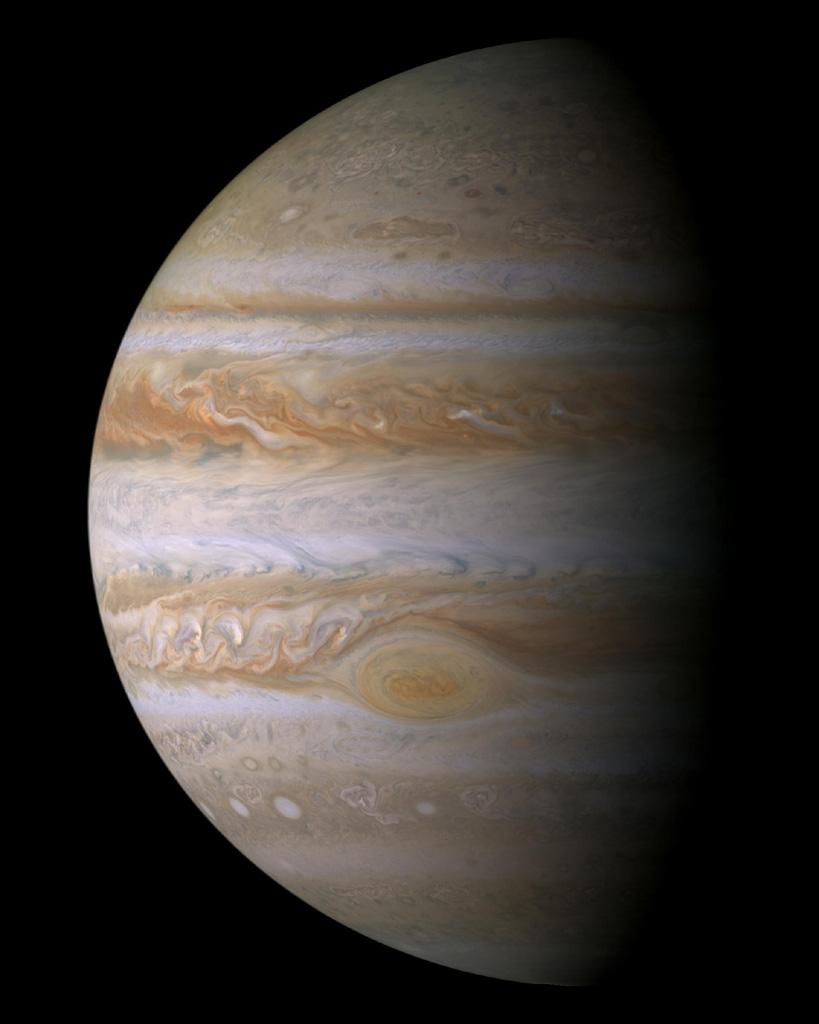NASA Jupiter Probe to Fly Over Great Red Spot

NASA's Juno spacecraft is about to get the best-ever look at Jupiter's famous Great Red Spot.
Juno will fly over the 10,000-mile-wide (16,000 kilometers) storm — which is so big that three Earths could fit inside it — at 10:06 p.m. EDT tonight (July 10; 0206 GMT on July 11), during the probe's sixth science flyby of Jupiter.
The encounter will provide humanity its first up-close looks at the Great Red Spot, which astronomers have been monitoring since 1830.
"Jupiter's mysterious Great Red Spot is probably the best-known feature of Jupiter," Juno principal investigator Scott Bolton, of the Southwest Research Institute in San Antonio, said in a statement. "This monumental storm has raged on the solar system's biggest planet for centuries. Now, Juno and her cloud-penetrating science instruments will dive in to see how deep the roots of this storm go, and help us understand how this giant storm works and what makes it so special."
The $1.1 billion Juno mission launched in August 2011 and arrived in orbit around Jupiter on July 4, 2016. Ever since, the spacecraft has been looping around the gas giant every 53.5 days in a highly elliptical orbit that brings it within a few thousand miles of Jupiter's cloud tops at the closest point, or perijove.
During the July 10 flyby, perijove will come at 9:55 p.m. EDT (0255 GTM on July 11), when Juno will be just 2,200 miles (3,500 km) above Jupiter. The probe will fly over the Great Red Spot 11 minutes and 33 seconds later, skimming about 5,600 miles (9,000 km) above the storm, NASA officials said.
"All eight of the spacecraft's instruments as well as its imager, JunoCam, will be on during the flyby," NASA officials wrote in the same statement.
Get the Space.com Newsletter
Breaking space news, the latest updates on rocket launches, skywatching events and more!
Juno is using this science gear to study Jupiter's composition and interior structure, gathering data that will reveal clues about the planet's formation and evolution. The probe collects most of this information during its perijove passes.
Juno is scheduled to continue operating through at least February 2018.
Follow Mike Wall on Twitter @michaeldwall and Google+. Follow us @Spacedotcom, Facebook or Google+. Originally published on Space.com.
Join our Space Forums to keep talking space on the latest missions, night sky and more! And if you have a news tip, correction or comment, let us know at: community@space.com.

Michael Wall is a Senior Space Writer with Space.com and joined the team in 2010. He primarily covers exoplanets, spaceflight and military space, but has been known to dabble in the space art beat. His book about the search for alien life, "Out There," was published on Nov. 13, 2018. Before becoming a science writer, Michael worked as a herpetologist and wildlife biologist. He has a Ph.D. in evolutionary biology from the University of Sydney, Australia, a bachelor's degree from the University of Arizona, and a graduate certificate in science writing from the University of California, Santa Cruz. To find out what his latest project is, you can follow Michael on Twitter.









